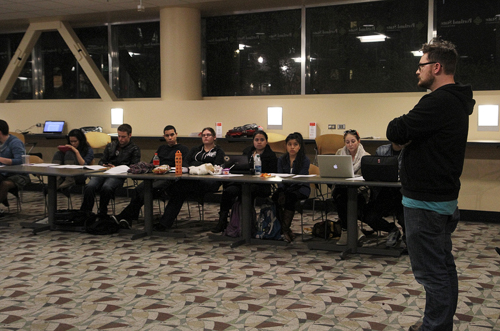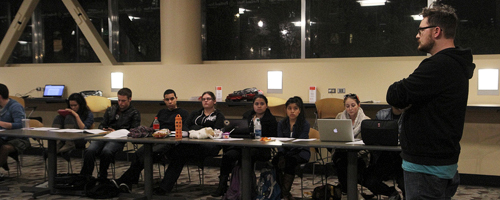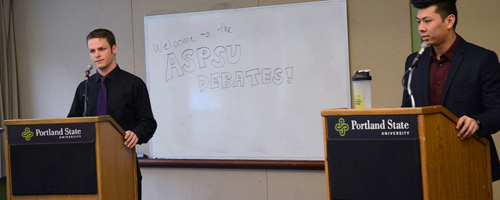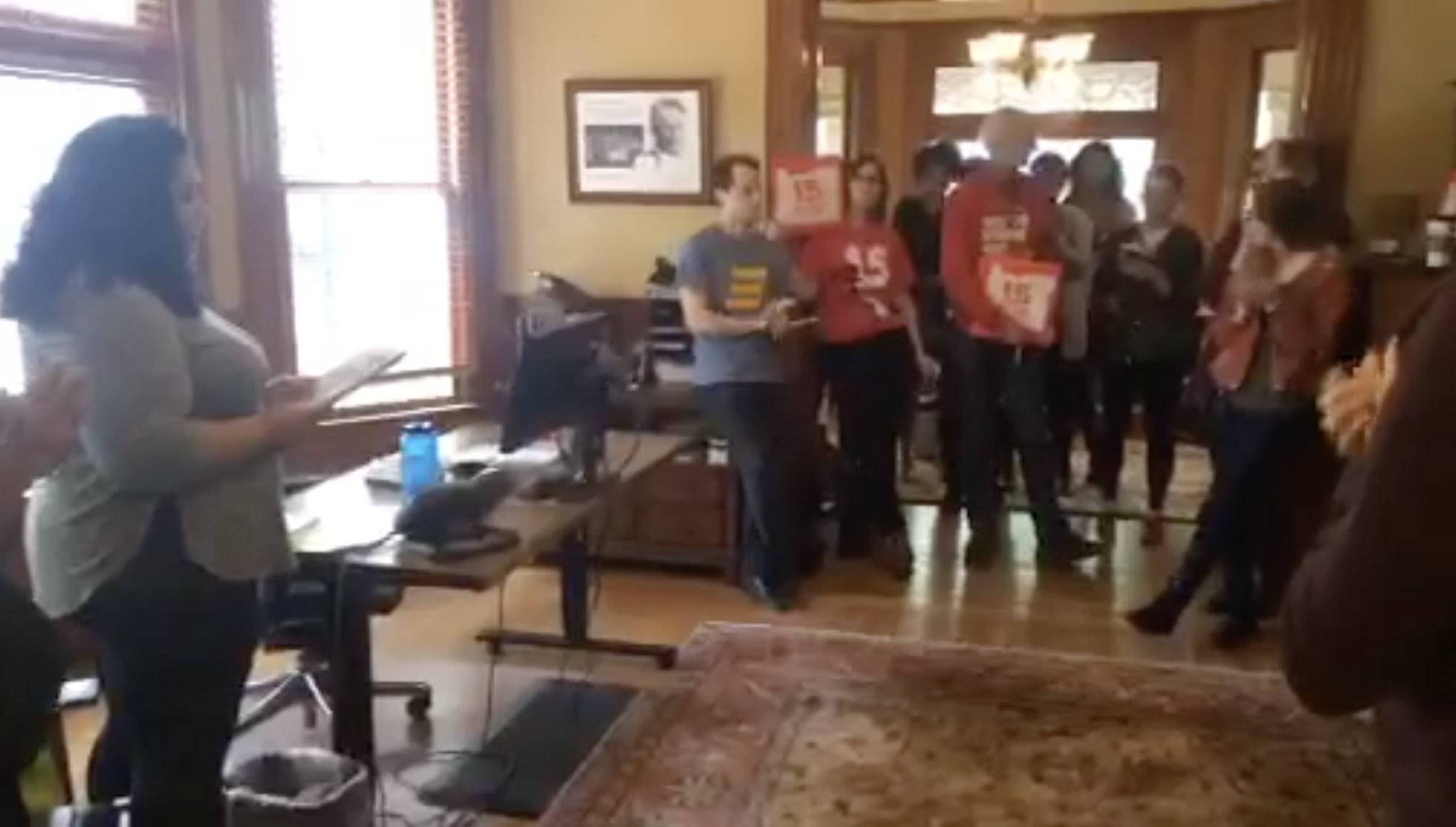The Associated Students of Portland State University’s Judicial Review Board met Thursday night and gave the green light to put former ASPSU Vice President Ethan Allen Smith’s new constitution on the ballot next week.
Judicial Board OKs new constitution for ballot

The Associated Students of Portland State University’s Judicial Review Board met Thursday night and gave the green light to put former ASPSU Vice President Ethan Allen Smith’s new constitution on the ballot next week.
The meeting came after a heated Senate meeting on Wednesday night, at which Smith’s constitution was strongly opposed by the Senate.
At issue was the number of student signatures required to allow the student body to vote on the new constitution.
In a JRB meeting on Monday, the justices told Smith that he would need the signatures of 1 percent of the student body—a total of 172 signatures—in order to have his proposed constitution placed on the ballot. However, the Senate objected on Wednesday, saying that Smith should have to meet the threshold for a constitutional amendment, which would be 3 percent of the student body, or 514 signatures.
The disagreement came down to the way the JRB interpreted the current constitution, but because the JRB had not made a formal ruling in their Monday meeting, the Senate was not able to contest their decision.
At Thursday’s meeting, Smith produced the valid signatures of 353 students. The justices then briefly discussed whether those signatures, which tallied just over 2 percent of the student body, were enough.
With three votes in favor, none opposed, and one vote abstained, the board decided that Smith’s constitution would appear on the ballot.
“We told him 1 percent; he provided over 2 percent. It should go on the ballot,” Chief Justice Aubrey Hoffman said. Justice Ryan Day agreed. “The other day we told him 1 percent, so it seems disingenuous to change that now, when he has the signatures.”
Some members of the JRB also expressed concern that the Senate’s objections were because of personal differences with Smith, rather than a concern over the board’s interpretation of the current constitution.
The meeting came after a heated Senate meeting on Wednesday night, at which Smith’s constitution was strongly opposed by the Senate.
At issue was the number of student signatures required to allow the student body to vote on the new constitution.
In a JRB meeting on Monday, the justices told Smith that he would need the signatures of 1 percent of the student body—a total of 172 signatures—in order to have his proposed constitution placed on the ballot.
However, the Senate objected on Wednesday, saying that Smith should have to meet the threshold for a constitutional amendment, which would be 3 percent of the student body, or 514 signatures.
The disagreement came down to the way the JRB interpreted the current constitution, but because the JRB had not made a formal ruling in their Monday meeting, the Senate was not able to contest their decision.
At Thursday’s meeting, Smith produced the valid signatures of 353 students. The justices then briefly discussed whether those signatures, which tallied just over 2 percent of the student body, were enough.
With three votes in favor, none opposed, and one vote abstained, the board decided that Smith’s constitution would appear on the ballot.
“We told him 1 percent; he provided over 2 percent. It should go on the ballot,” Chief Justice Aubrey Hoffman said. Justice Ryan Day agreed. “The other day we told him 1 percent, so it seems disingenuous to change that now, when he has the signatures.”
Some members of the JRB also expressed concern that the Senate’s objections were because of personal differences with Smith, rather than a concern over the board’s interpretation of the current constitution.
Further Reading
Judicial board rejects senate amendments based on time and procedural issues







Great story, seems a little ‘repetitive’ in some places though…